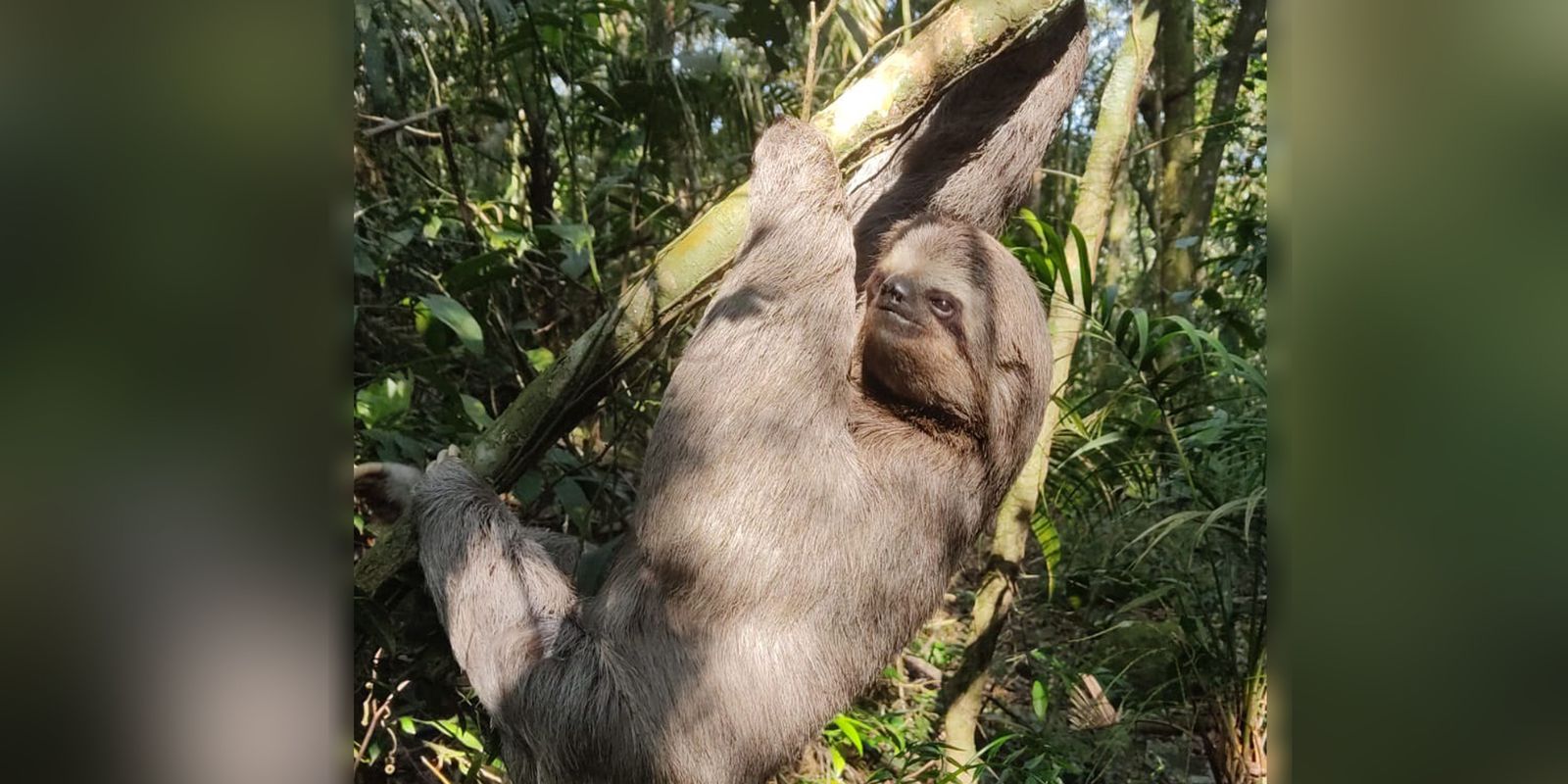Field work in the Tijuca National Park, home to the largest urban forest in the world, revealed a surprise in its Atlantic Forest: environmental monitors recorded in videos and photos the biggest sloth ever seen by the park’s team to date. The common sloth (Bradypus variegatus) was found in the forest sector and, according to experts’ estimates, is approximately 1 meter long, which is the maximum size that this species can reach.
According to Cecília Bueno, a specialist in road ecology and professor at the Veiga de Almeida University, “this beautiful specimen is the largest common sloth ever seen by the park’s team to date. From the images, we identified that it is a female and, to our surprise, she could be pregnant, since we are in the reproductive season for this species. The size of these animals ranges from 42 to 80 centimeters in total body length. This sloth spotted in the Conservation Unit, which is in the middle of a megalopolis, must be close to the maximum size of the species, which is 80 centimeters. The weight of the adult individual varies from 2.25 kilos to 6.3 kilos and this female must weigh at least 6 kilos”.
The sighting of this specimen also indicates, according to the specialist, that the fauna is managing to meet its needs in the forests of the park. “This means that the forest region where this species lives is healthy, is being conserved and offers different nutrients for the animals”.
The estimates made by Cecília are in line with the reports of monitors who saw the scene live. “We were impressed. She was really big, the biggest I’ve ever seen. For us, it seemed to be twice the size of the sloths we are used to seeing”, said Flávio Deveza, from the team of monitors who recorded the giant descending through the branches of trees.
The sloth is a mammal and one of the most common in Tijuca National Park. Currently, there are six species of sloth identified, and the one that occurs in the park is popularly known as common sloth (Bradypus variegatus). This species inhabits forest regions and is found in countries such as Brazil, Peru, Venezuela and Nicaragua.
The head of the Tijuca National Park, Eduardo Frederico, recalls the importance of records like this one. “One of the treasures of the park is that it is an open-air laboratory, where partner researchers have the opportunity to find diverse species of fauna and flora. This flagrant did not occur during a study, but that arouses scientific interest in the biodiversity of our Conservation Unit ”, he clarified.
Curiosities
Sloths feed on leaves, such as those of embaúba and fig trees. They sleep approximately 20 hours a day and are excellent swimmers. In addition, it has a greenish brown coat due to the presence of chlorophyll organisms, such as green algae and cyanobacteria, which live in symbiosis with this species. They come down from trees to do their physiological needs (which can happen once a week) or to go to another tree.
Do not feed or water sloths. If you spot an injured animal, look for a park employee and take him to the place so that the animal is treated properly.
mammals
Currently, there are 63 species of medium and small mammals in the Tijuca National Park, with emphasis on the capuchin monkey (Cebus apella), the crab-eating fox (Cerdocyon thous), the lesser anteater (Tamandua tetradactyla), paca (Agouti paca), sloth (Bradypus variegatus), agouti (Dasyprocta leporina), hedgehog (Coendu insidiosus), opossum (Didelphis marsupialis), tapiti (Sylvilagus brasiliensis), barnacle (Sciureus aestauans) , the hummingbird bat (Glossophaga soricina) and the coati (Nasua nasua), the park’s symbol animal.

















